GPT-4 may have many amazing features which we didn’t expect, but now we all are already excited about the next version of the artificial intelligence (AI) chatbot technology. GPT-5 is the latest language model being developed by OpenAI & it's expected to have even more advanced capabilities than its predecessor, GPT-3. With the potential to understand context even better, generate more coherent long-form text & have a better understanding of nuance and bias in language, GPT-5 has the power to revolutionize the way we interact with technology.
In this article, we will discuss about the GPT-5 technology and its revolutionary impact on different industries. So, let's dive in & discover how GPT-5 could transform the world as we know it!
So, let's get started with knowing -
GPT-5 Presented by OpenAI:

GPT-5 is an artificial intelligence language model developed by OpenAI, an AI research organization. It is the latest version in the GPT (Generative Pre-trained Transformer) series, which started with GPT-1 in 2018 & continued with GPT-2 & GPT-3.
GPT-5 builds on the success of its predecessors by incorporating more advanced natural language processing capabilities & increasing the amount of training data. It has been trained on a massive corpus of text, including internet articles, books & scientific papers, which allows it to understand & generate more complex & nuanced language.
OpenAI has not yet released GPT-5, and it is unclear when it will become publicly available. However, its development has generated significant interest & anticipation in the AI community, as it has the potential to further advance natural language processing & transform AI applications across various industries.
From Vision to Reality: Why GPT-5 is the Next Step in AI Evolution?
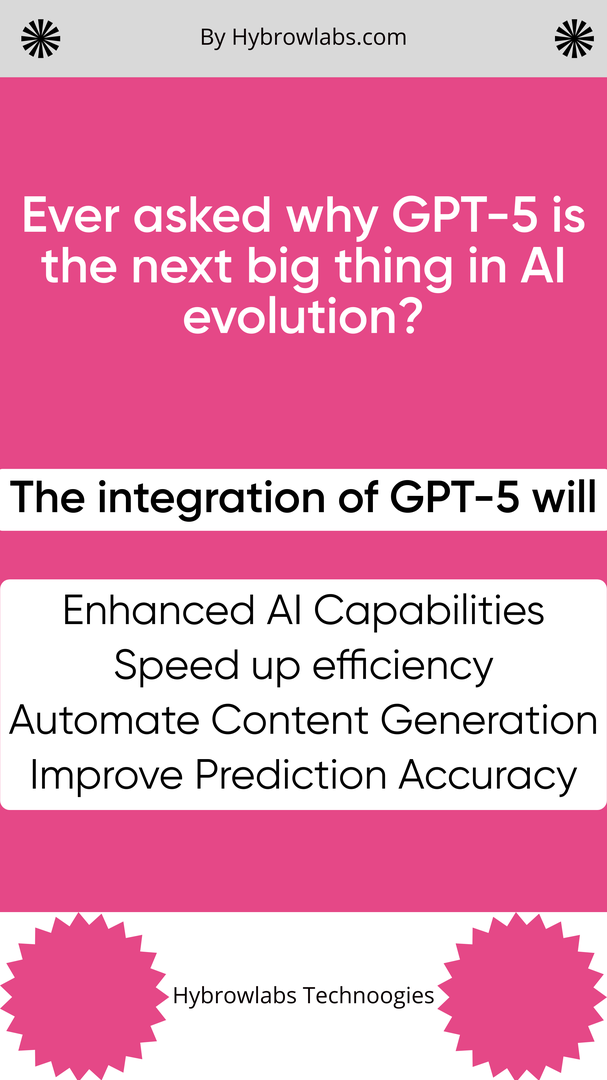
GPT-5 integration refers to the integration of GPT-5 with other AI technologies & systems to create more advanced & powerful AI applications. We need to integrate GPT-5 to leverage its cutting-edge capabilities & transform various industries to shape the future of technology. However, GPT-5 integration is important for several reasons, including:
1. Smarter AI Abilities:
GPT-5's advanced natural language processing capabilities can be integrated with other AI technologies to create more advanced & sophisticated AI applications. By integrating GPT-5 with computer vision, speech recognition & machine learning technologies, for example, AI systems can be created that are more intelligent & able to perform more complex tasks.
2. Faster Efficiency:
GPT-5 integration can lead to more efficient & streamlined AI systems. For example, GPT-5 can be integrated with chatbots & virtual assistants to create more intelligent & human-like interactions with customers, leading to improved customer satisfaction and increased efficiency.
3. Auto Content Creation:
GPT-5 can be integrated with content creation & curation systems, allowing for the automated generation of articles, summaries & social media posts. This can save significant time & resources in content creation & help businesses to respond quickly to trends & news events.
4. More Accurate Predictions:
GPT-5's language translation capabilities can be integrated with other language processing technologies to create more accurate & efficient translation systems. This can be particularly important for businesses operating in international markets, where accurate translation can be critical for success.
5. Industry-Specific Applications:
GPT-5 integration can lead to more advanced & specialized AI applications in various industries. For example, in healthcare, GPT-5 can be integrated with electronic health records & medical imaging technologies to assist doctors & medical professionals in patient care, diagnosis & treatment.
GPT-5: Personalizing Healthcare Future:
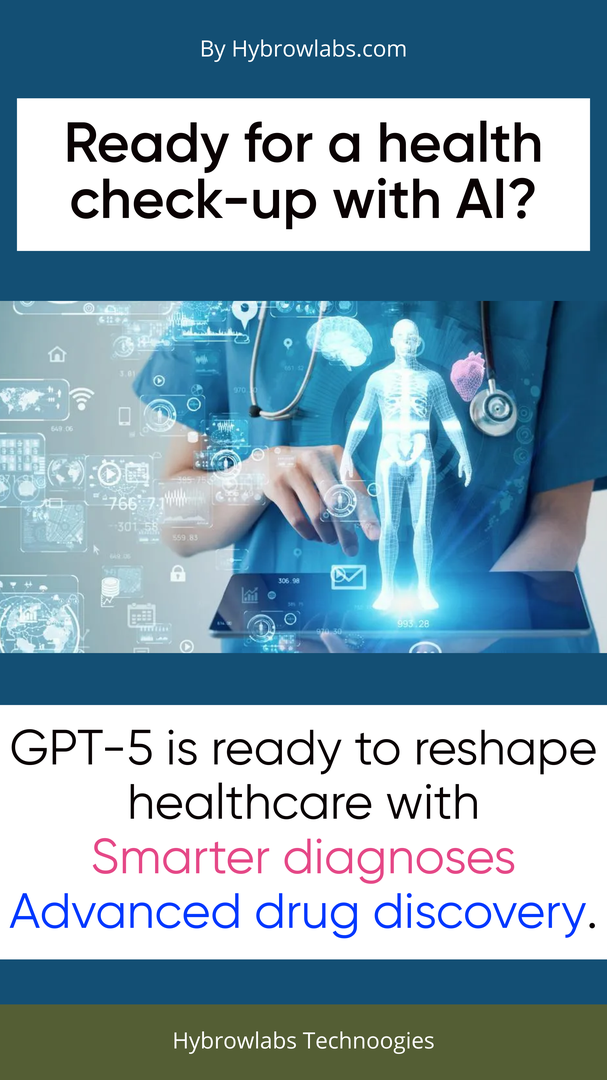
In recent years, there has been growing interest in using artificial intelligence (AI) to improve healthcare outcomes. One promising area of research is the development of personalized treatment plans using natural language processing (NLP) & machine learning. In this context, let’s see the capabilities of GPT-5 in healthcare & medicine.
1. Smarter Diagnoses & Treatments:
While GPT-3 can analyze patient medical records & provide some level of diagnoses & treatment recommendations, it still lacks the accuracy & precision needed for personalized healthcare. GPT-5 is expected to have even more advanced natural language processing capabilities & be able to process even larger amounts of data, allowing it to provide more accurate & personalized diagnoses & treatment recommendations.
2. Drug Discovery:
GPT-3 is limited in its ability to analyze biomedical data for drug discovery. While it can identify potential drug targets, it lacks the accuracy & precision needed for personalized drug development. GPT-5 is expected to have more advanced drug discovery capabilities, allowing it to analyze large amounts of biomedical data & predict the efficacy of different treatment options, leading to the development of more effective & personalized drugs.
Innovative Finance with GPT-5:

In recent years, the finance & banking industry has undergone significant transformation through the adoption of artificial intelligence (AI) technologies. In finance & banking, GPT-5 can be used to analyze market trends & trading data, providing valuable insights that can inform investment decisions. In this context, we will explore the potential of GPT-5 in finance & banking, with a particular focus on its ability to perform market trading analysis.
1. Smarter than Stockbrokers:
GPT-5 can be used to analyze vast amounts of financial data & provide insights into market trends. By analyzing historical market data, GPT-5 can identify patterns & provide predictions for future market trends. This can be used by traders to make more informed investment decisions. In comparison, One major limitation is its lack of specialized knowledge & understanding of financial concepts & it is not able to provide the same level of accuracy & insight as GPT-5.
2. Reduce risk:
GPT-5 can also be used to analyze risk factors & assess potential risks associated with investments. This can be used to develop risk management strategies & optimize investment portfolios. However, to manage risk, banks & financial institutions need to analyze a wide range of data, including economic indicators, market trends & other variables that could affect investment decisions. GPT-3 may not be able to process this kind of data, especially if it is not in a format that it can understand.
Revolutionizing Retail with GPT-5: Unleashing AI Power:

In the world of e-commerce & retail, GPT-5 is expected to have a significant impact, revolutionizing the way businesses interact with their customers & improving the overall online shopping experience. Let's explore some of the ways in which GPT-5 can be used in e-commerce & retail
1. Smart Product Recommendations:
GPT-5 can be used to analyze customer purchase histories, browsing behaviors & other data to provide highly personalized product recommendations. By using advanced natural language processing techniques, GPT-5 can understand customers' needs & preferences & provide recommendations that are highly relevant & likely to result in conversions. In comparison, GPT-3's product recommendation capabilities are limited & it is not able to provide the same level of accuracy & personalization as GPT-5.
2. Improved Customer Service:
GPT-5 can also be used to provide more personalized & efficient customer service. By analyzing customer inquiries & providing accurate and relevant responses, GPT-5 can help retailers improve customer satisfaction & loyalty. In comparison, GPT-3 may not have the ability to understand complex customer queries or requests. While it may be able to generate responses based on pre-defined rules or scripts, it may struggle with more nuanced or contextual customer interactions.
3. Streamlined Inventory Management:
GPT-5 can also be used to optimize inventory management by analyzing sales data & predicting future demand for products. This can help retailers make more informed decisions about stock levels, reduce waste & improve profitability. GPT-3 can assist in generating basic inventory reports & insights based on data analysis, but it may not be able to handle more complex tasks such as predicting demand & supply, optimizing inventory levels & identifying trends in consumer behavior as GPT-5.
Intelligent Learning with GPT-5:
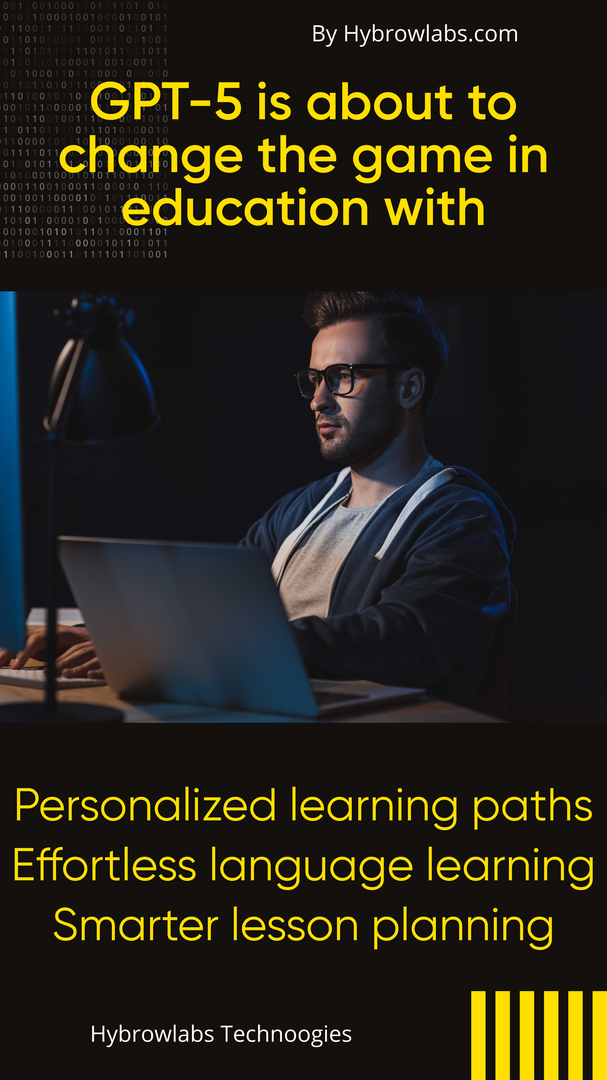
Education & training are essential components of any society & advancements in technology have brought about new ways of teaching & learning. One technology that has the potential to revolutionize education & training is GPT-5, a cutting-edge AI language model developed by OpenAI. Here are some of the ways in which GPT-5 can be used in Education & Training:
1. Personalized Learning Paths:
GPT-5 can be used to provide more personalized & adaptive learning experiences. By analyzing student performance & providing feedback in natural language, GPT-5 can help educators & trainers tailor their approach to individual learners' needs. This can help improve learning outcomes & increase student engagement. In comparison, GPT-3's knowledge base is limited to the text it has been trained on & it may not have access to the same breadth & depth of educational content as GPT-5. This can limit its ability to provide accurate & comprehensive answers to student inquiries.
2. Easy Language Learning:
GPT-5 can also be used to facilitate language learning by providing real-time translation & pronunciation feedback. By analyzing students' language abilities & providing feedback in natural language, GPT-5 can help improve language learning outcomes. In comparison, GPT-3's language learning capabilities are limited & it may not be able to provide the same level of accuracy & personalized feedback as GPT-5.
3. Effortless lesson planning:
GPT-5 can also be used to develop more effective curricula by analyzing student performance data & identifying areas where students may need additional support. By using advanced natural language processing techniques, GPT-5 can help educators & trainers develop more effective lesson plans & learning materials. In comparison, GPT-3's capabilities in curriculum development are limited & it may not be able to provide the same level of insight & guidance as GPT-5.
Conclusion-
GPT-5 has the potential to revolutionize the field of virtual worlds, offering users a completely immersive and personalized experience. By incorporating its advanced natural language processing capabilities, GPT-5 can be integrated into virtual environments, resulting in more interactive and responsive experiences for users. This integration can lead to a more personalized, engaging, and immersive virtual world that closely resembles real-world interactions. Furthermore, GPT-5 can provide users with intelligent and responsive virtual assistants. To explore more on this topic, check out Hybrowlabs Development Services.
FAQ-
1. What are some of the potential applications of GPT-5?
GPT-5 could be used for a wide range of applications, including natural language processing, text generation, chatbots, virtual assistants, content creation, and more.
2. What are some limitations of the current version of GPT technology?
The current version of GPT technology, GPT-3, has limitations in its ability to understand context and produce coherent long-form text. It also struggles with understanding nuances in language and identifying bias in its output.
3. When will GPT-5 be released?
There is no official release date for GPT-5 yet, as it is still in development. OpenAI has not provided a timeline for its release.
4. How does GPT-5 compare to other language models and AI systems?
It is difficult to make direct comparisons between GPT-5 and other language models and AI systems, as it has not yet been released. However, based on its expected capabilities, it is likely to be one of the most advanced language models to date.
5. Will GPT-5 replace human workers in certain industries?
It is possible that GPT-5 and other AI systems could replace human workers in certain industries, particularly those that involve repetitive or mundane tasks. However, it is also possible that AI will create new job opportunities in other areas.



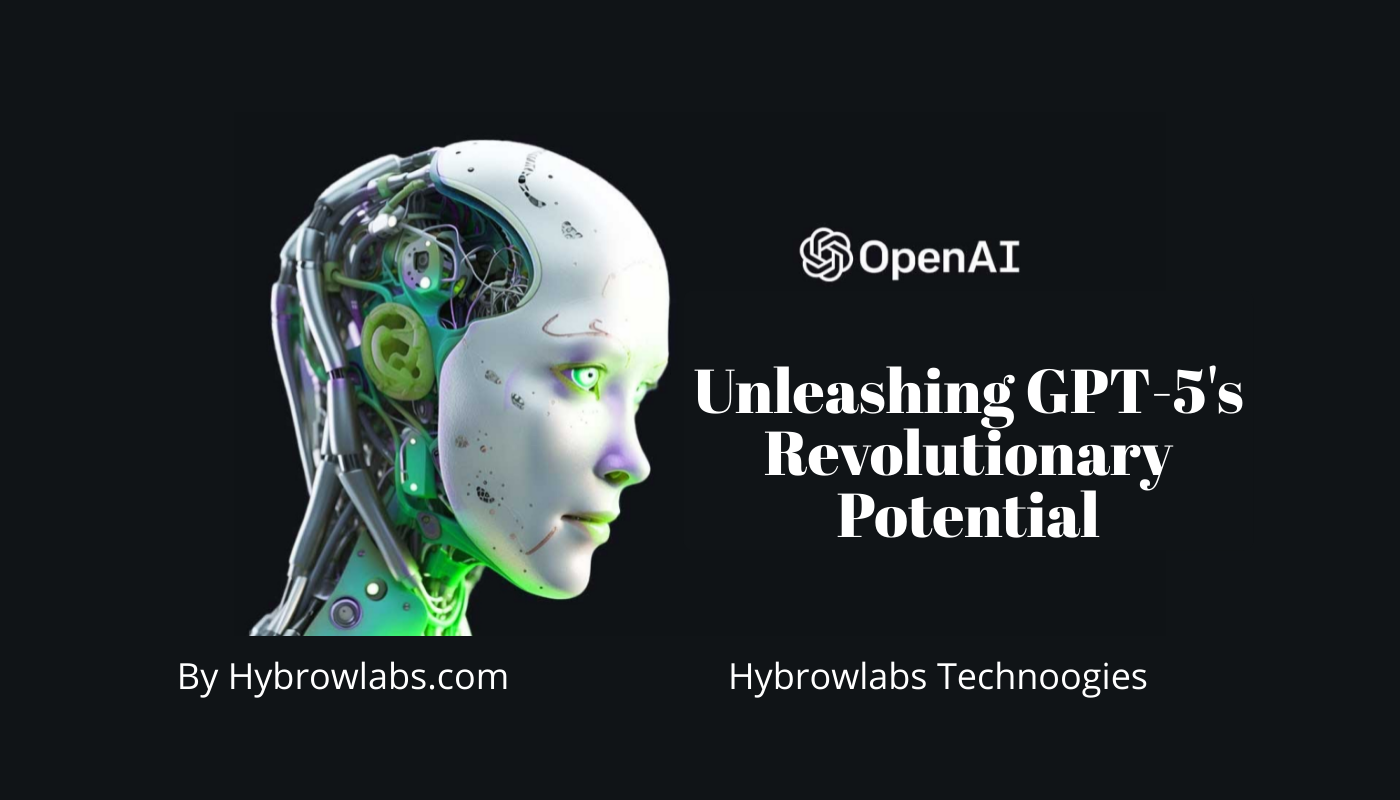


a3dc85.jpg)

.jpg)
fd8f11.png)
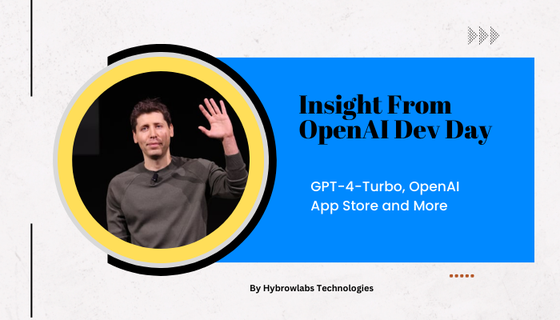
.jpg)
.jpg)